
- Permbajtja
- prev
- next
- prev
- next
A view in Aldo Rossi’s professional life and architectural work.
by Enxhi Pepa & Gjergji Llushkaj, "Thresholds of XX century architecture" EPOKA University
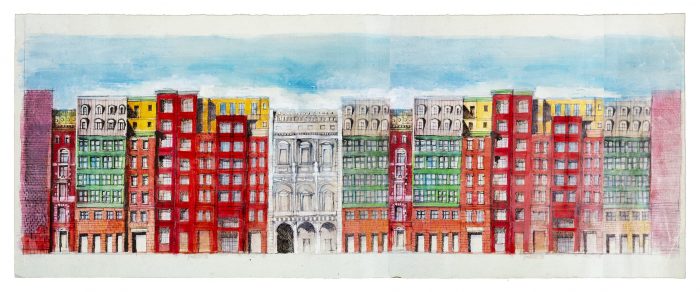
Introduction
After the 1960s, in opposition to the modernism principles, emerged the movement called Neo-Rationalism that aimed to undermine the impact of the technology in architecture and reinstate this importance to the social and cultural aspects within an urban context. This movement was centered in Italy where it was knows as La Tendenza. One of the most depicted figures and contributors to this movement with his projects, thoughts and writings was Aldo Rossi who raised the concept of the collective memory of the city, and the design of an area as an expression of both physical presence and historical sense.
Life
Aldo Rossi (born in May 3rd, 1931, in Milan, Italy) is the first Italian architect to have ever won the Pritzker Prize for architecture in 1990. He is not only recognized as an architect, but also as a designer, poet, teacher, author, theorist and an artist.
Rossi was born and raised in Milan, Italy. His family’s occupation was the manufacturing of bicycles but while growing up Rossi decided to follow the route of a scholar. He attended his early education at Lake Como and from there after in Lecco. During this period, World War II was taking place. After the ending of war, in 1949, Aldo started attending university education in the field of architecture in Milan Polytechnic University, which he finished 10 years later and was awarded with a degree in 1959. During this long period of time Rossi had started writing in 1955 and by the time of his graduation he became the editor of an Italian architectural magazine called Casabella-Continuità.
He left the magazine in 1964 and from there on pursued a different career. Rossi started teaching as an architecture professor in different institutes in Italy, including the university he graduated from. One year later, in 1965 he published ‘The architecture of the city’, an architectural book which now is recognized and used a lot in architectural literature.
Up until this period no works of Aldo Rossi had been built. This changed after a life-threatening event, a car accident, that lead him to the doors of a hospital. During his stay he was inspired for his winning project of the Cemetery of San Cataldo. From there on he started growing professionally and gained more experience in construction and design. He took on work of all types of housing deriving from villas to apartment buildings, complexes and hotels, works which were built all around the world.
Rossi traveled a great deal, accepting invitations by many well-known institutions in Germany, the United States, and Switzerland to give lectures. According to Harvard chairman, Jose Rafael Moneo: "When future historians look for an explanation as to why the destructive tendencies that threatened our cities changed, Rossi's name will appear as one of those who helped to establish a wiser and more respectful attitude.” This kind of attitude was found in almost every one of Rossi’s works, repetition of elements of the city in new buildings, which went hand in hand with the city’s flow and history.
In 1976 Aldo Rossi’s journey led to America, a place that quickly influenced his opinion and gave him new angles from which one can view the social and cultural urban context. It was this journey too that inspired him to contribute to architecture differently. His drawings were not immediately valued by the public, but they would later on be featured in the MAXXI museum in Rome, December 17, 2020, curated by Alberto Ferlenga. The museum showcased around 800 drawings, sketches, models, documents, photographs etc.

Aldo Rossi did not stop only at drawing but took his title as a designer seriously. He designed numerous objects that fascinated the public. One of his most renowned pieces is the “Milano” chair designed in 1988.
It was all of his contribution and hard work that earned him the honors to be the very first Italian architect to win The Pritzker award in 1990, the highest award in the field.
Aldo Rossi died in September 4th, 1997, at the age of 66 due to serious injuries from a car accident.
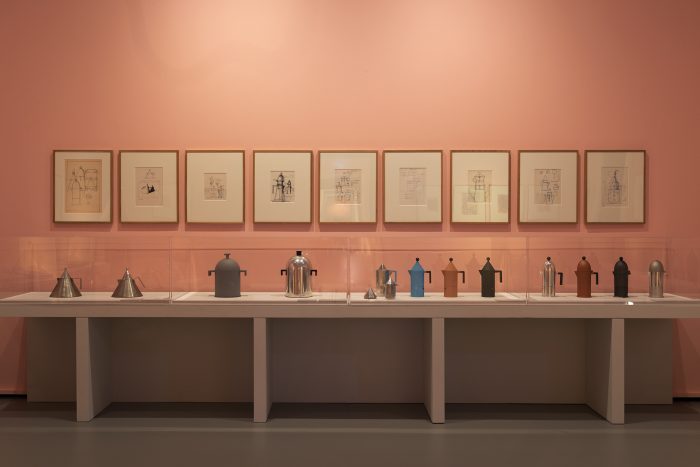
Philosophy and characteristics
Rossi remains one of the top contributors on the change in the way of city development and urban designing. In his book “Architecture of the City” he stated his belief that the crucial factors that should guide the urban design decisions are the ones that can withstand over time, such as the daily life of the city, its street and monuments. He goes on to argue that these urban artefacts are what makes a city valued and meaningful to study. “Monuments give structure to the city.” he states holding to the idea that the city can remember its past and portrays it on these monuments.
In his criticism toward modernism, he even refuses to call himself a postmodernist because he never was a modernist. Among his critiques Rossi expresses that the substantial analysis of understanding a city and its history can’t be exchanged with an architect’s personal impulse or caprice. He thought the abstract forms of modernism were deficient, but on the other hand he never undermines the importance of the input of the architect and especially the poetry. Being even considered “a poet that happens to be an architect” by one of the jurors of the Pritzker architecture prize, Rossi emphasizes in his book “Autobiografia Scientifica” that poetry is an example of the human effort to achieve happiness. In this way the architect should weigh and intertwine both of these aspects: the substantial unbiased analysis and the human poetic intuition.
As an architect, on his first works Rossi had to face the challenge of the complex density in European Cities. Dealing with this in a careful manner towards the celebration of urbanism he gained himself the importance and reputation that carries to the present. It is interesting to mention how many of Aldo Rossi’s work refined the definition of the space they were located creating even loci, distant from the city centers. An example of this occurrence would be the Borgoricco town hall placed in a flat plain area near Veneto which gave attention and decency to the small community of dwellers.
With his developed knowledge about the system of a city, Rossi designed the public commissions in which he was involved as a miniature form of a city embedded in a building. Viewed through many of his designs, repetition of elements seems to be one of the means he preferred to use in search of the essential form. Rossi believed that this aided the simplicity of construction and allowed it to be easily re-implementable. This path of design thinking would make him a contributor to the later solutions of housing crisis.
Aldo Rossi’s works
San Cataldo Cemetery, Modena, 1971
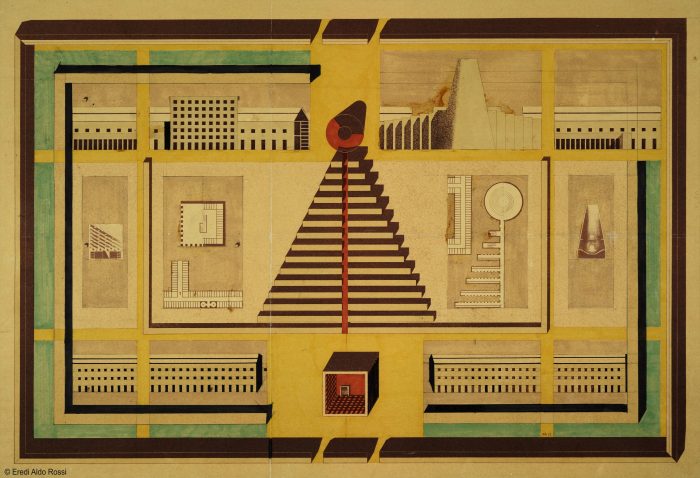
© Eredi Aldo Rossi
The San Cataldo cemetery is one of Rossi’s most remarkable works. Home to an ancient cemetery and to various statues and tombstones, it served as a significant portrayal of Rossi’s belief in translations of the past. Entering the site of this construction, one would think it resembles a factory with a series of buildings. But in closer inspection one would notice that the iconic vibrant red structure is not made of floors, doors, windows and doesn’t it even have a roof. It’s just a shell with openings, some for light, some for entrance and some for cremated bodies. The view of the factory doesn’t change but it’s now a factory where work has stopped permanently.
In this way, Rossi makes his architecture metaphysical, facing the viewer with this nature of death.
Il Teatro del Mondo, Venice, 1980
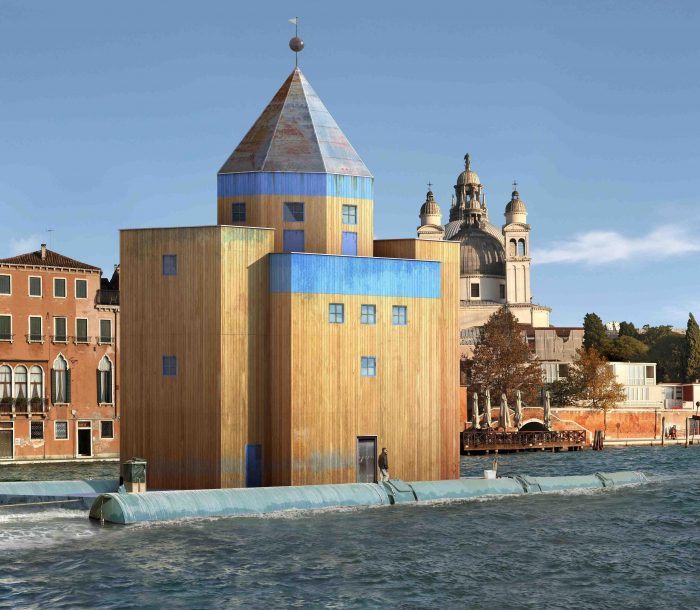
©Antonio Martinelli
Rossi found the theatre very dear and inspiring and in this another case of recalling past practices, Rossi designed the playful, floating Teatro del Mondo. This work was outstanding in its impressiveness while still holding its presence in the collective memory of Venice. Even though after sailing the Adriatic Sea, this wooden structure would have to be dismantled, it gained Rossi international recognition.
Friedrichstadt Housing Block, Berlin, 1981
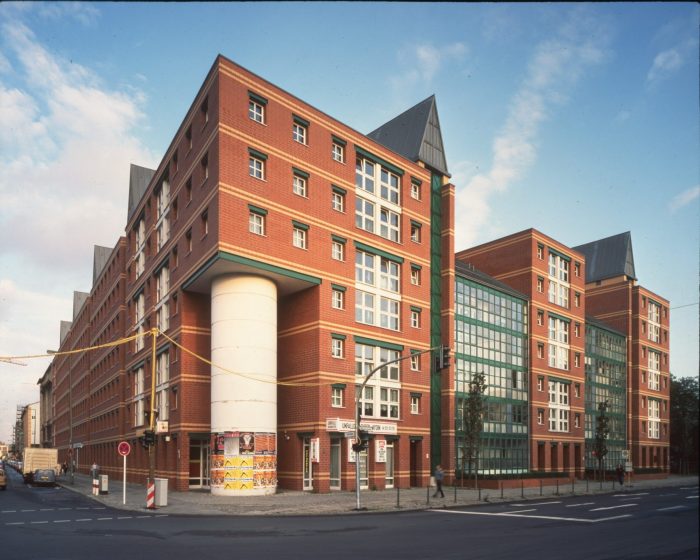
©Palladium Photodesign
The first of many of Rossi’s work in Berlin in collaboration with Gianni Braghieri. The two of them came up with the impressive design, distinctive white cylinder volume and copper roofs by analyzing the architectural tradition and existing elements. This project is characterized by different types of apartments and spaces which makes every facade different. In order to accentuate the differences between different segments, they used a strong green vertical element.
Piazza Nuova, Perugia, 1982.

The piazza was built but never completed. It, nonetheless, shows Rossi’s intent to demonstrate the urban themes that relate the historical tradition of a city to the needs of its contemporary life.
The Il Palazzo hotel, Fukuoka, 1987.

Il Palazzo, ©NACASA & PARTNERS INC.
This project was the first of many that followed, Japanese projects by Rossi. It has been influenced by eastern and western architecture. It pure shapes and the red Iranian travertine stone that covers the façade, with the aged copper lintels stand along the river and give the building an almost utopic view.
‘Piroscafo’ bookcase.
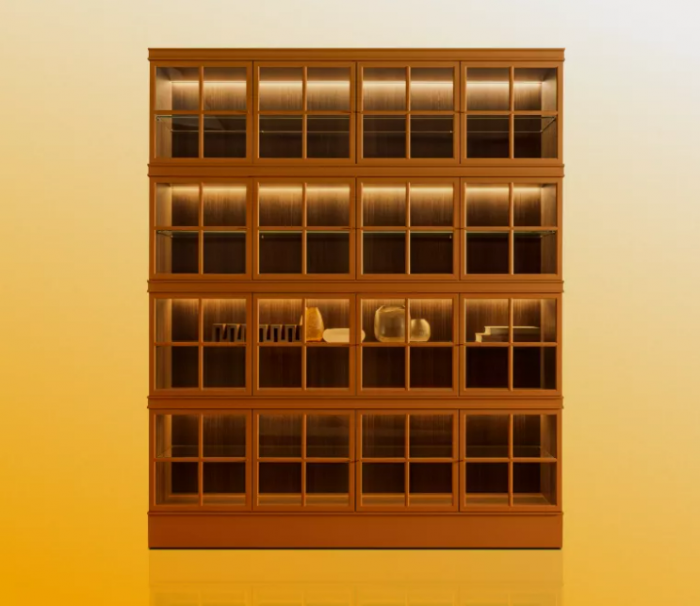
Rossi’s scope of work as a designer was fulfilled when he came forward with the design of furniture. The bookcase’s concept was born from Rossi staring at a building’s façade. Even the furniture follows the neo-rationalist approach of Rossi.
‘Parigi’ armchair.
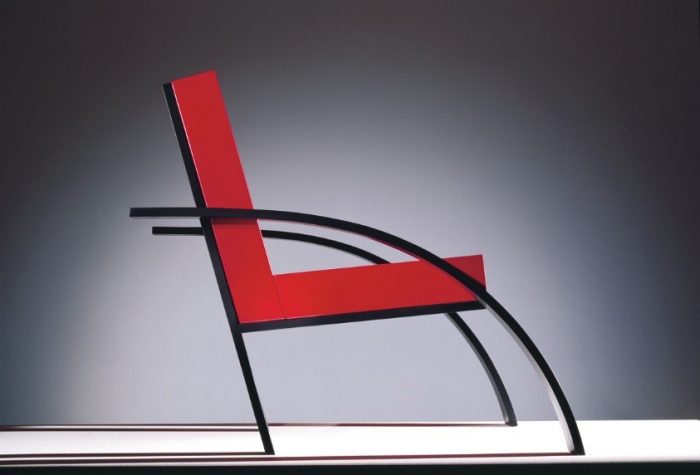
The project of the Parigi armchair in its simplicity came to be as an attempt to create a furniture that adapts to a home or office environment. Its focus is not efficiency but comfort and personality. At first glance is seems hard and rigid but on top of the elegant aluminum frame is placed polyurethane seat and backrest with a vibrant red finish.
Conclusion
Aldo Rossi became a great contributor to the field of architecture with his theoretical books, practical projects and innovative way of designing in contrary to the present practices of the time. His influence has played part in shifting the city building perspective to new ideals and methods which still remain inspiring to many designers. In the same way this built projects have lasted the test of time, giving shape and dignity to their cities and communities.